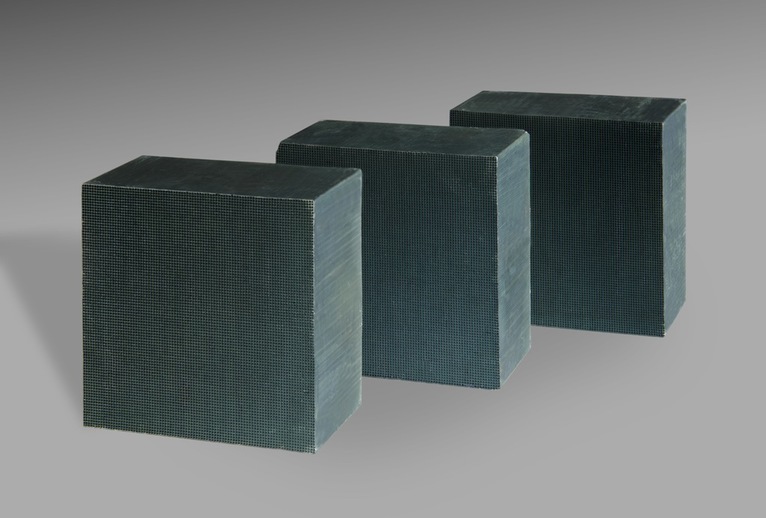Industrial Offgas Purification
Catalysts for Oxidation and Reduction Applications

Industrial exhaust gas typically contains a variety of organic compounds, such as chemical by-products, solvents or malodorous compounds. These volatile organic compounds (VOCs), Carbon Monoxide (CO) and hydrocarbons (HC) are emitted by many industrial processes.
These processes include:
APPLICATION TYPICAL POLLUTANTS EXAMPLES Basic Chemicals Production VOC, CO, NOx, N2O, NH3 Formaldehyde Acetaldehyde Nitric Acid Petrochemical Industry VOC, CO, NOx, N2O Styrene
Phenol Terephthalic Acid (PTA) Phthalic/Maleic Anhydride (PA/MA) Acrylonitrile (ACN)
Methyl Methacrylate (MMA) Acrylic Acid (AA) On-purpose olefin production Caprolactam Adipic Acid Fuels Industry CO, NOx Hydrogen (H2) Plants Fluid Catalytic Cracking (FCC) Plants Gas-to-liquid, Biomass-to-liquid, Coal-to-liquid (GTL/BTL/CTL) Purification of technical gases HC, CO, H2, O2, Sulfur compounds Removal of trace gases from Industrial gases (CO2, O2, N2, Noble Gases, Synthetic air) Other industries and appliances VOC, CO Food industry, coffee roasting (odor decomposition) Printing, packaging, coating, enamelling, laminating Pharmaceutical industries Paint booths Waste combustion Wood processing, panelboard, furniture manufacturing Wood stoves Depending upon local, regional or global regulations these compounds need to be eliminated. Some applications also require a decomposition of nitrogen compounds such as NOx, N2O and NH3.
In most cases, catalytic incineration offers the ideal solution as it is both highly effective and cost efficient. Compared to other technologies such as thermal oxidation, catalytic oxidation reactions take place at a lower temperature. This means less stress on equipment and reduced operating costs, which can provide significant economic benefit for operators.
The EnviCat product line from Clariant provides a full range of standard and customized catalysts in both spherical and honeycomb forms, with precious metals or base metals as active components. Our flexibility in manufacturing allows us to customize the catalyst according to the specific demands of each application and equipment design.Iodine Absorption in Nuclear Power Plants
For the removal of radioactive iodine in nuclear power plants and reprocessing plants there is a series of adsorber systems available, proven over decades. These are based on silver or potassium iodide, supported by acid resistant carriers.

